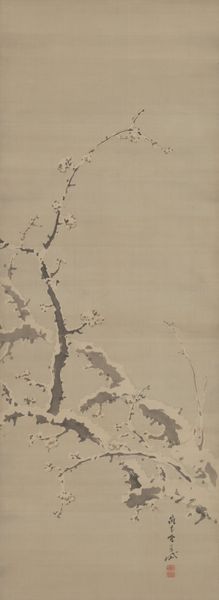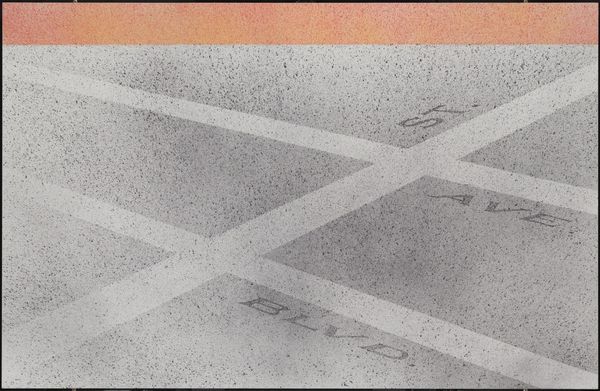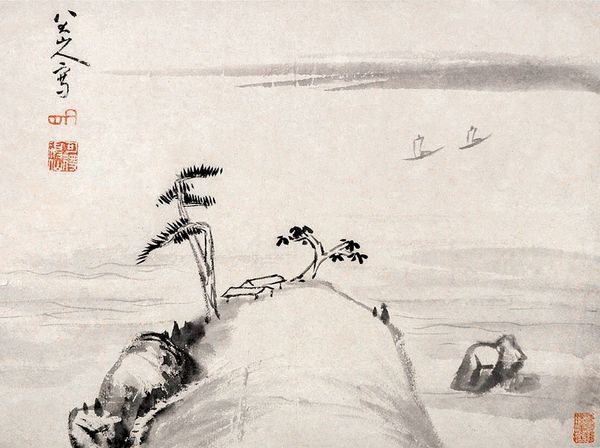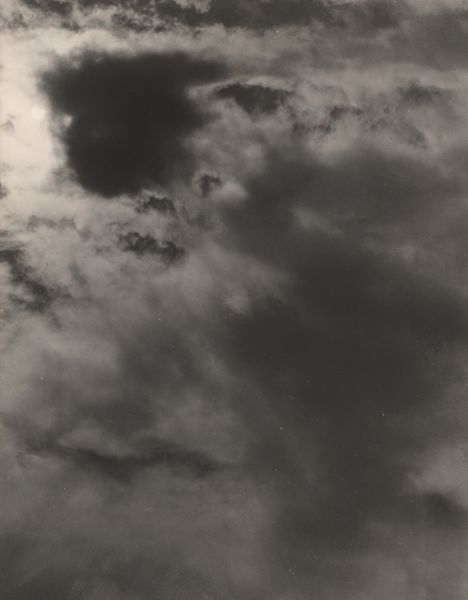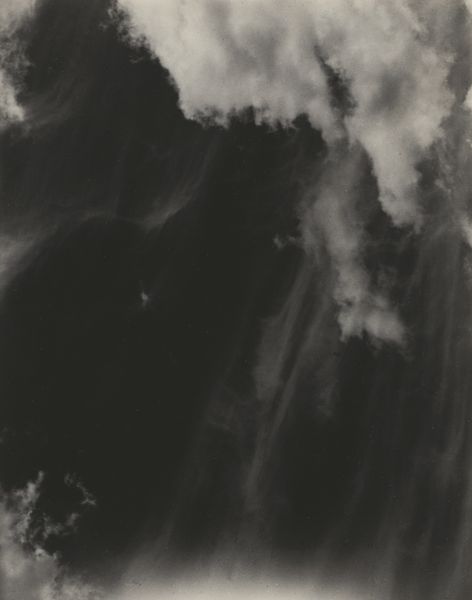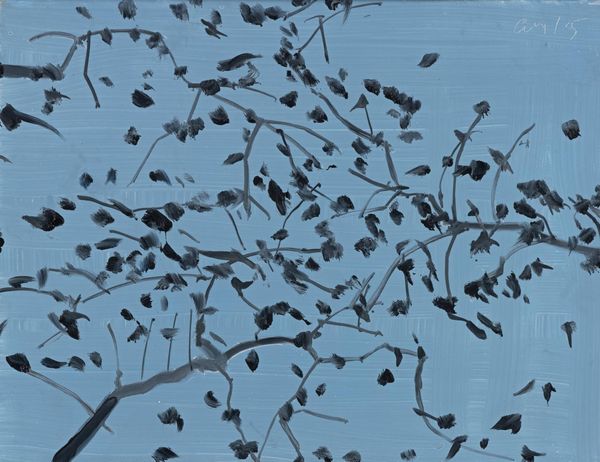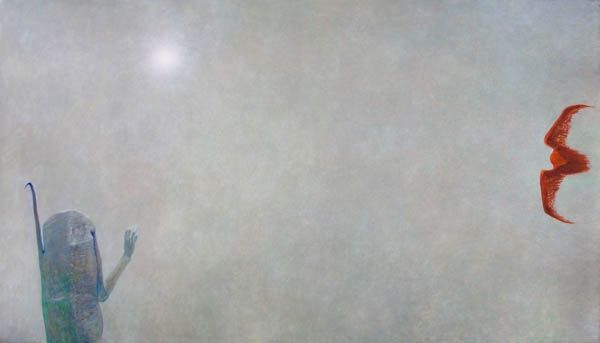
paper, watercolor, hanging-scroll, ink
#
water colours
#
asian-art
#
landscape
#
ukiyo-e
#
japan
#
paper
#
watercolor
#
hanging-scroll
#
ink
#
line
#
watercolor
Dimensions: 35 3/4 × 12 5/8 in. (90.81 × 32.07 cm) (image)74 1/8 × 18 5/16 in. (188.28 × 46.51 cm) (mount, without roller)
Copyright: Public Domain
Editor: This is "Noh Play Hachinoki," a watercolor and ink hanging scroll by Shibata Zeshin, created around the 19th century. It's a striking image because of the vast negative space and the delicate depiction of the birds. What narratives do you see embedded within this piece? Curator: I see a compelling commentary on social mobility and the perception of worth in 19th century Japan. The Hachinoki story itself, a tale of a impoverished samurai’s unexpected reward for offering hospitality, speaks volumes. What does it mean to display humility versus ambition in a rigid class structure? Consider how Zeshin uses negative space to evoke a sense of emptiness or potential – whose potential are we really considering? Editor: That's a really interesting point. I hadn’t thought about the empty space representing unrealized potential or the constraints of social class. The three birds, then, become almost symbolic of the protagonist's journey, maybe their flight representing his aspiration. Curator: Exactly. Now consider the ukiyo-e tradition Zeshin is working within. While often associated with entertainment districts and depictions of courtesans, it could also be used to subtly critique societal norms. How can we read this seemingly simple landscape as a quiet protest against inequity? What’s missing from the picture, and why does that absence feel so significant? Editor: So, beyond just a pretty landscape, we’re looking at a potential statement on social justice through artistic symbolism? I initially saw only beauty, but now recognize layers of meaning rooted in history. Curator: Precisely! Art often provides a safe space to address difficult conversations, like questioning assumptions around value and worth. Always ask yourself: who is privileged and who is not represented? Editor: I learned a lot about looking at art through a sociological lens. This really expanded my understanding beyond just aesthetics. Curator: And for me, your perspective reinforced the importance of initial reactions to guide deeper investigation. Thank you!
Comments
minneapolisinstituteofart almost 2 years ago
⋮
Set in the mid-Kamakura period, the story of Hachinoki (“Potted Trees”) is a tale of loyalty rewarded. One snowy day, a traveling monk appeared at the home of the warrior Sano no Genzaemon-no-jō Tsuneyo and asked to stay. Tsuneyo initially declined as his family was too poor to host anyone, but at the urging of his wife, changed his mind. To keep the house warm, Tsuneyo sacrificed his prized bonsai trees—miniature plum, cherry, and pine—as firewood. Tsuneyo explained to the monk that his family had once owned a large piece of land, but a relative had usurped it. But despite his poverty, he avowed, he would immediately ride his horse to battle if the shogun needed him. A few days later, he received a mobilization order by the regent Hōjō Tokiyori. Arriving in broken armor and holding a rusty weapon, Tsuneyo endured the mockery of his peers when he was specifically called out to meet the regent. He then realized that the monk he had helped was Tokiyori. To show his appreciation, Tokiyori promised to return the lost land to him, and gave three estates for the three trees Tsuneyo sacrificed.
Join the conversation
Join millions of artists and users on Artera today and experience the ultimate creative platform.
